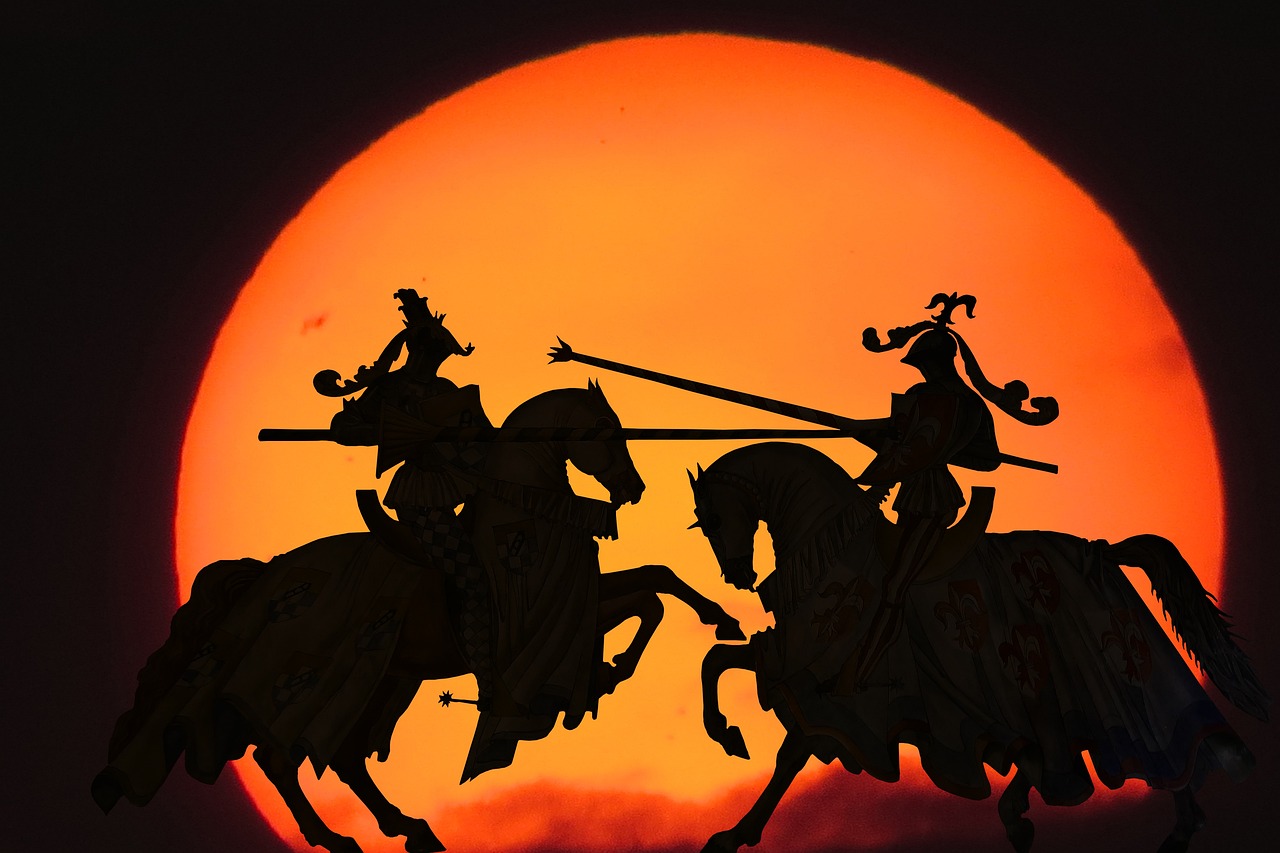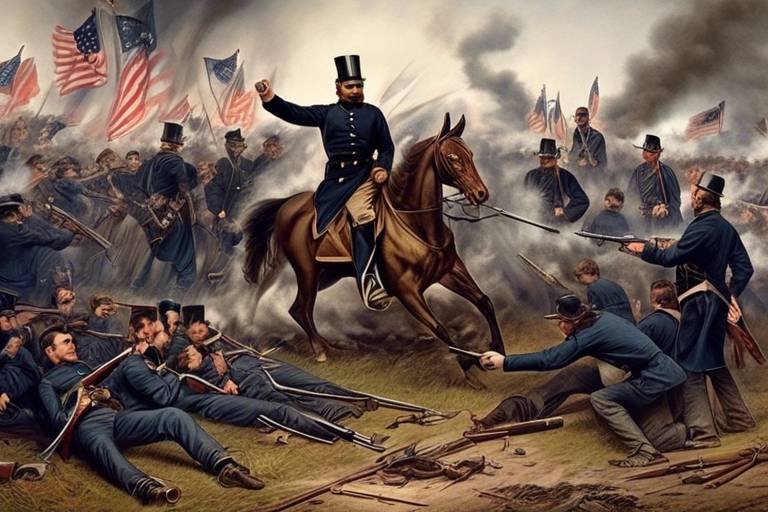The Civil War - Causes, Key Battles, and Outcomes
When delving into the tumultuous era of the American Civil War, one cannot help but be captivated by the complex web of causes, the fierce clashes on the battlefield, and the profound repercussions that reverberated throughout the nation. This pivotal conflict, which tore the United States apart, was not merely a skirmish between two factions but a seismic event that reshaped the course of history.
The causes of the Civil War were deeply rooted in the fabric of American society, stemming from a potent mix of economic interests, social tensions, and political ideologies. At the heart of the conflict loomed the divisive issue of slavery, a moral stain that fractured the nation along North-South lines. The fervent debate over states' rights, the balance of power between the federal government and individual states, and the specter of sectionalism further fueled the flames of discord.
As the war unfolded, key battles emerged as crucibles of blood and valor, where the fate of the nation hung in the balance. Gettysburg, with its harrowing three-day clash, Antietam, marked by its staggering casualties, and Vicksburg, a strategic stronghold on the Mississippi River, stand out as pivotal moments that shaped the trajectory of the war. These battlegrounds witnessed the ebb and flow of fortunes, as generals on both sides deployed cunning strategies and sheer determination in a bid for victory.
Amidst the chaos of war, leaders and generals rose to prominence, their names etched in the annals of history. Abraham Lincoln, the steadfast President who steered the nation through its darkest hour, Jefferson Davis, the beleaguered leader of the Confederacy, and military titans like Ulysses S. Grant and Robert E. Lee, whose tactics and tenacity left an indelible mark on the conflict.
Life during the Civil War was a crucible of hardship and resilience, where soldiers endured the horrors of battle and civilians grappled with the upheaval of daily existence. The war brought unprecedented challenges in healthcare, communication, and social dynamics, leaving a profound impact on the fabric of society.
One of the defining moments of the war came with the Emancipation Proclamation, a bold stroke by President Lincoln that forever altered the course of the conflict. This landmark executive order declared the freedom of all slaves in Confederate territory, striking a blow against the institution of slavery and galvanizing the abolitionist movement.
As the guns fell silent, the nation embarked on a tumultuous journey of reconstruction, seeking to heal the wounds of war and forge a path towards unity. Efforts to rebuild the shattered nation, address the rights of newly freed slaves, and reconcile the divisions that had torn the country asunder defined the Reconstruction Era.
The legacy of the Civil War endures to this day, shaping the contours of American society, politics, and culture. Its profound impact on the nation's identity and memory serves as a constant reminder of the cost of division and the imperative of unity.
From the crucible of conflict, lessons emerge that resonate through the ages. The Civil War stands as a testament to the enduring struggle for civil rights, the imperative of preserving the Union, and the ongoing quest for equality and justice. In its aftermath, the nation grapples with the echoes of the past, seeking to learn from the mistakes of history and forge a more perfect union.

Causes of the Civil War
When delving into the , it becomes evident that a complex web of economic, social, and political factors contributed to the eruption of this monumental conflict in American history. At the heart of the matter lay the contentious issue of slavery, which had long been a divisive force between the Northern and Southern states. The Southern economy heavily relied on slave labor for its agricultural production, while the North increasingly viewed slavery as morally reprehensible and incompatible with the principles of the Union.
Furthermore, states' rights played a significant role in fueling tensions between the North and South. Southern states advocated for greater autonomy in governing their affairs, particularly concerning the institution of slavery, while Northern states sought to uphold federal authority and prevent the spread of slavery into new territories. This clash over the balance of power between state and federal governments exacerbated existing divisions and heightened regional animosities.
Additionally, the concept of sectionalism further deepened the rift between the North and South. The two regions developed distinct identities, economies, and cultures, leading to a growing sense of distrust and mutual suspicion. The differences in societal norms, economic structures, and political ideologies created a powder keg situation that eventually exploded into open conflict.
As tensions escalated and compromise became increasingly elusive, the stage was set for the outbreak of the Civil War. The underlying causes of slavery, states' rights, and sectionalism converged to create a volatile environment where the nation stood on the brink of a devastating rupture.

Key Battles
When delving into the tumultuous history of the American Civil War, one cannot overlook the monumental significance of key battles that shaped the course of this epic conflict. These battles were not merely clashes of arms, but rather seismic events that reverberated throughout the nation, altering the trajectory of the war and ultimately determining its outcome.
Among the most pivotal battles of the Civil War was the Battle of Gettysburg, a three-day engagement in Pennsylvania that marked a turning point in the conflict. Fought with ferocity and valor on both sides, Gettysburg stands as a testament to the high cost of war and the resilience of those who fought in its midst. The Union victory at Gettysburg dealt a severe blow to the Confederate forces, reshaping the balance of power in the war.
Antietam, known as the bloodiest single-day battle in American history, holds a somber place in the annals of the Civil War. The fields of Antietam ran red with the blood of thousands, underscoring the brutal nature of the conflict and the sacrifices made by those who fought. The Union's strategic victory at Antietam bolstered morale and provided a crucial boost to the Northern war effort.
Vicksburg, a siege that lasted for weeks on end, showcased the tenacity and determination of both Union and Confederate forces. The capture of Vicksburg by Union General Ulysses S. Grant was a strategic triumph that severed Confederate supply lines and split the Confederacy in two, paving the way for further Union successes in the Western Theater.
These key battles, among others, exemplify the fierce intensity and strategic complexity of the Civil War. They serve as reminders of the human cost of conflict and the enduring legacy of a nation torn asunder. Each engagement, with its own unique dynamics and outcomes, contributed to the larger tapestry of the war, shaping its narrative and influencing its ultimate resolution.

Leaders and Generals
During the tumultuous period of the Civil War, key figures emerged on both sides, shaping the course of history with their leadership and military prowess. Among these leaders were President Abraham Lincoln, whose steadfast determination to preserve the Union and end slavery defined his presidency. On the Confederate side, Jefferson Davis stood as the President of the Confederate States, advocating for states' rights and leading the secessionist movement.
On the battlefield, Union General Ulysses S. Grant became known for his tenacity and strategic acumen, earning the nickname "Unconditional Surrender" Grant for his relentless pursuit of victory. In contrast, Confederate General Robert E. Lee, with his tactical brilliance and unwavering loyalty to the South, became a legendary figure in American military history.
These leaders and generals navigated the complexities of war, making critical decisions that influenced the outcome of key battles such as Gettysburg, Antietam, and Vicksburg. Their leadership styles, military strategies, and personal convictions played a pivotal role in shaping the narrative of the Civil War and its ultimate resolution.

Life During the War
During the Civil War, life for both soldiers and civilians was marked by immense challenges and hardships. For soldiers, the harsh realities of warfare meant facing brutal conditions on the battlefield, enduring long marches, limited rations, and constant danger. The constant fear of injury or death loomed over them, creating a sense of uncertainty and anxiety in their daily lives. Additionally, the lack of proper medical care often resulted in high casualty rates from wounds and diseases, further adding to the grim reality of war.
On the home front, civilians faced disruptions in their daily routines as the war brought about shortages of essential goods, inflation, and economic instability. Families were torn apart as many men left to join the fight, leaving behind women and children to manage households and farms. The absence of male family members meant that women had to take on new roles and responsibilities, becoming the backbone of communities and taking on jobs traditionally held by men.
Communication during the war was also a challenge, with news traveling slowly and often inaccurately. Families anxiously awaited letters from loved ones on the front lines, hoping for any sign of their well-being. The emotional toll of not knowing the fate of their family members added to the already heavy burden carried by civilians.
Despite the hardships, acts of resilience, courage, and compassion were also prevalent during this tumultuous period. Communities came together to support each other, providing aid to soldiers and their families, and forming bonds that transcended the divisions of war. The Civil War brought about a profound impact on the daily lives of individuals, shaping their experiences and leaving a lasting imprint on the fabric of American society.

Emancipation Proclamation
The stands as one of the most pivotal moments in American history, a bold declaration that forever altered the course of the Civil War and the fight against slavery. Issued by President Abraham Lincoln on January 1, 1863, this executive order proclaimed all slaves in Confederate-held territory to be free. While it did not immediately free all enslaved individuals, it fundamentally transformed the nature of the war, turning it into a struggle for freedom and emancipation.
By targeting the institution of slavery in the rebellious states, the Emancipation Proclamation aimed to weaken the Confederacy both economically and morally. It also provided a moral justification for the Union's cause, framing the conflict as a fight for liberty and equality. This proclamation not only altered the dynamics of the Civil War but also laid the groundwork for the eventual abolition of slavery in the United States.
Despite its limitations in terms of immediate impact, the Emancipation Proclamation had far-reaching consequences. It galvanized the abolitionist movement, inspiring enslaved individuals to seek their freedom and encouraging support for the Union cause. Additionally, it shifted the focus of the war from solely preserving the Union to also ending the institution of slavery, aligning the conflict with the broader goals of justice and human rights.

Reconstruction Era
After the devastating conflict of the Civil War, the United States entered a period known as the Reconstruction Era. This phase, spanning from 1865 to 1877, aimed to rebuild the nation both physically and politically in the aftermath of the war. The Reconstruction Era was characterized by efforts to address the challenges of integrating the Confederate states back into the Union, defining the rights of newly freed slaves, and laying the foundation for a reunited nation.
One of the key aspects of the Reconstruction Era was the implementation of the Reconstruction Amendments, which included the 13th Amendment abolishing slavery, the 14th Amendment granting citizenship and equal protection under the law to all persons born or naturalized in the U.S., and the 15th Amendment prohibiting the denial of voting rights based on race, color, or previous condition of servitude. These amendments aimed to secure the rights of African Americans and redefine the social and legal landscape of the country.
During this period, the federal government also initiated various Reconstruction Acts to oversee the reintegration of the Southern states and establish new governments that adhered to the principles of equality and democracy. The Freedmen's Bureau was established to provide assistance to newly freed slaves, offering education, healthcare, and employment opportunities to help them transition to freedom.
However, the Reconstruction Era faced significant challenges, including resistance from white supremacist groups like the Ku Klux Klan, who sought to undermine the progress made towards racial equality and civil rights. The era also witnessed political turmoil and power struggles between the executive and legislative branches, leading to debates over the extent of federal intervention in the reconstruction process.
Despite the efforts to rebuild and reunite the nation, the Reconstruction Era ultimately fell short of fully achieving its goals. The period ended with the Compromise of 1877, which marked the withdrawal of federal troops from the South and effectively ended Reconstruction, allowing Southern states to revert to discriminatory practices and institutionalize segregation through Jim Crow laws.
Nevertheless, the Reconstruction Era laid the groundwork for future civil rights movements and efforts to combat racial inequality in the United States. It highlighted the complexities of post-war reconciliation and the challenges of implementing lasting social and political change in a divided society.

Legacy of the Civil War
When exploring the legacy of the Civil War, it becomes evident that its impact reverberates throughout American society, politics, and culture to this day. The scars left by this bloody conflict run deep, shaping the nation's identity and memory in profound ways. The Civil War not only defined the boundaries of the United States but also redefined the very essence of what it means to be American.
One of the most enduring legacies of the Civil War is the abolition of slavery. The war served as a catalyst for the emancipation of millions of enslaved individuals, fundamentally altering the social fabric of the nation. The Emancipation Proclamation, issued by President Lincoln in 1863, marked a pivotal moment in the fight for freedom and equality, setting the stage for the eventual passage of the 13th Amendment.
Furthermore, the Civil War reshaped the balance of power between the federal government and the states. The conflict solidified the supremacy of the Union and established the principle that the United States is a single, indivisible nation. The concept of states' rights, which had been a contentious issue leading up to the war, was forever altered by the outcome of the conflict.
The legacy of the Civil War also extends to the realm of memory and commemoration. The war gave rise to a rich tradition of memorialization, with monuments, memorials, and commemorations dotting the American landscape. These symbols serve as tangible reminders of the sacrifices made during the war and the enduring impact it has had on the nation.
Moreover, the Civil War continues to inform contemporary debates around issues of race, equality, and justice. The struggle for civil rights that gained momentum in the aftermath of the war is an ongoing battle, with echoes of the past still resonating in the present. The lessons learned from the Civil War remain relevant today, serving as a reminder of the importance of unity, equality, and justice for all.

Lessons Learned
As we reflect on the tumultuous period of the Civil War, there are invaluable lessons that resonate through time, offering insights into conflict resolution, unity, and the ongoing quest for equality. One of the most profound lessons learned from this era is the importance of preserving the Union at all costs. The Civil War starkly demonstrated the devastating consequences of division and the necessity of maintaining national unity to ensure a cohesive and prosperous future.
Moreover, the Civil War serves as a poignant reminder of the enduring struggle for civil rights and equality. The fight for emancipation and the abolition of slavery underscore the ongoing battle for justice and inclusivity in society. The sacrifices made during this pivotal moment in history continue to inspire movements for equality and social change, emphasizing the importance of upholding fundamental human rights for all individuals.
Additionally, the Civil War highlights the significance of effective conflict resolution strategies and diplomacy in resolving disputes. The failures and successes of both the Union and the Confederacy in navigating the complexities of war shed light on the importance of communication, negotiation, and compromise in achieving sustainable peace and reconciliation.
Furthermore, the aftermath of the Civil War and the Reconstruction era underscore the challenges and opportunities inherent in rebuilding a nation torn apart by conflict. The efforts to address the rights of newly freed slaves and heal the wounds of war emphasize the importance of empathy, understanding, and inclusivity in fostering a more equitable and harmonious society.
In conclusion, the lessons learned from the Civil War continue to resonate in contemporary times, serving as a poignant reminder of the enduring values of unity, equality, and justice. By studying this pivotal moment in history, we gain valuable insights into the complexities of conflict, the power of resilience, and the imperative of working towards a more just and inclusive society for all.
Frequently Asked Questions
- What were the main causes of the Civil War?
The Civil War was primarily caused by deep-rooted issues such as slavery, states' rights, and regional economic disparities. These factors created significant tensions between the Northern and Southern states, ultimately leading to the outbreak of the war.
- Which battles had a major impact on the outcome of the Civil War?
Key battles such as Gettysburg, Antietam, and Vicksburg played crucial roles in shaping the course of the Civil War. These battles marked significant turning points and had lasting effects on the strategies and morale of both the Union and Confederate forces.
- Who were some of the notable leaders and generals during the Civil War?
Key figures in the Civil War included President Abraham Lincoln, Confederate President Jefferson Davis, Union General Ulysses S. Grant, and Confederate General Robert E. Lee. These leaders played pivotal roles in guiding their respective sides throughout the conflict.
- What was the significance of the Emancipation Proclamation?
The Emancipation Proclamation, issued by President Lincoln, declared all slaves in Confederate-held territory to be free. This executive order not only altered the course of the war but also marked a significant step towards the abolition of slavery in the United States.
- How did the Reconstruction Era impact the post-war period?
The Reconstruction Era following the Civil War focused on rebuilding the nation, addressing the rights of newly freed slaves, and attempting to heal the wounds of the conflict. This period was crucial in shaping the future of the United States and defining the rights of all its citizens.
- What is the lasting legacy of the Civil War on American society?
The Civil War left a lasting impact on American society, politics, and culture. It played a significant role in shaping the nation's identity and memory, influencing issues such as race relations, states' rights, and the concept of a unified nation.
- What lessons can be learned from the Civil War?
The Civil War offers valuable lessons in terms of conflict resolution, the importance of preserving the Union, and the ongoing struggle for civil rights and equality. By studying this pivotal moment in history, we can gain insights into the challenges and responsibilities of maintaining a united and just society.



















